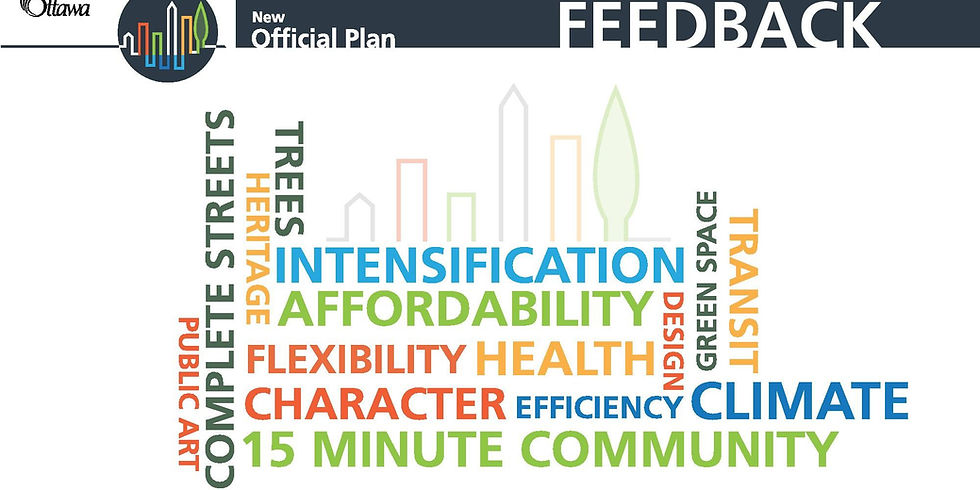I've read the City of Ottawa Draft Official Plan from stem to stern, and I think it presents a promising future of a green and vibrant city.

I am particularly encouraged by the commitment to 15 Minute Neighbourhoods. I have lived in de facto fifteen minute communities elsewhere, and I know from experience that walkability is achievable at a variety of levels of density.
"Many of my neighbours in Alta Vista share an impression that Alta Vista is not currently navigable on foot. Although many of us reside within a kilometre or two of retail, often the route to that retail is indirect and inhospitable."
I have been a resident of Alta Vista for fifteen years. I see in the Draft Official Plan, that Alta Vista has been designated Inner Urban. If I am not mistaken, Alta Vista is unique among the Inner Urban neighbourhoods such as Old Ottawa East, Old Ottawa South and Westboro which have connected street grids with small blocks and narrow streets. Alta Vista, on the other hand, has many non-connected cul-de-sacs and many housing developments that are fenced off on three sides and accessible only from a busy main road.

Many of my neighbours in Alta Vista share an impression that Alta Vista is not currently navigable on foot. Although many of us reside within a kilometre or two of retail, often the route to that retail is indirect and inhospitable. Anyone who has made the short but unpleasant trip from the foot of Kilborn Place to the entrance of Billings Bridge will know exactly what I am talking about.
"I am particularly encouraged by the commitment to 15 Minute Neighbourhoods."
In the Draft Official Plan, there are two references to neighbourhoods getting help from the City with connecting and improving their street grid for walkability, but these commitments are not repeated in the Inner Urban section, perhaps because many of those neighbourhoods do not need these modifications. I have two suggestions that I believe over time would allow Alta Vista to evolve into a walkable street grid:
1. Require that all new housing and retail developments fully integrate into the street grid on all four sides, and that any informal footpaths be preserved and enhanced.
2. Devise a "Driveway Buy-Back Program" that would allow homeowners to sell a driveway or side yard to the city as a future footpath or laneway.

I highly recommend the "Sprawl Repair Manual" by Galina Tachieva for examples of how to modify pedestrian-killing cul-de-sacs, into a walkable grid. A Driveway Buy-Back Program not only shortens the walking distance to retail for the residents of the cul-de-sac, but also makes the whole road usable for foot and bicycle commuters.
"Clearly many people around the world live their lives without a car, and many more would like to do so, but the challenges of the cul-de-sac plague are all too real in Alta Vista."
Many of my Alta Vista neighbours are wary of the intentions of the Official Plan to increase density in our neighbourhood. I think misgivings stem from people's inability to imagine anyone living in Alta Vista without a car. To many of our residents, more population means more driveways and less vegetation. I therefore encourage our planners to consider actively augmenting our connectivity, so that residents can begin to envision an increase in population without an increase in automobiles. Clearly many people around the world live their lives without a car, and many more would like to do so, but the challenges of the cul-de-sac plague are all too real in Alta Vista. - - -
Janet Mark Wallace is a first time blog contributor to Walkable Ottawa.

Commentaires